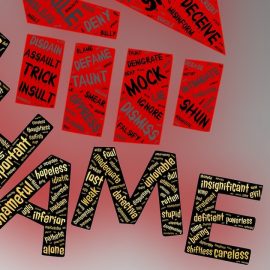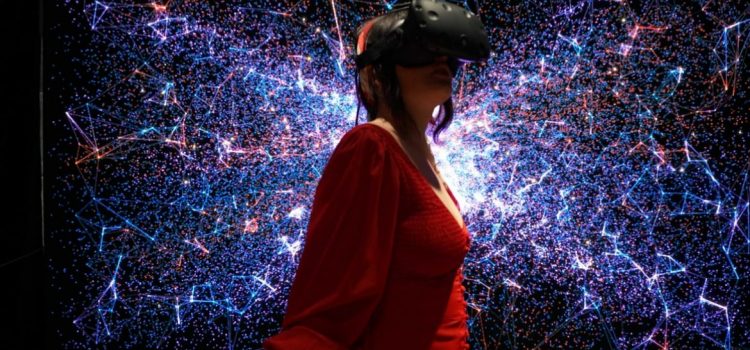

This article gives you a glimpse of what you can learn with Shortform. Shortform has the world’s best guides to 1000+ nonfiction books, plus other resources to help you accelerate your learning.
Want to learn faster and get smarter? Sign up for a free trial here .
How can virtual reality be useful outside of gaming? Is VR the future? Will the virtual world sever interpersonal relationships? What kind of effect will VR have on mental health?
When most people think of virtual reality, they think of an expensive gaming headset with mediocre graphics and limited games. However, VR is for a lot more than just video games. VR technology is becoming more prominent in healthcare, education, and even in the workplace.
Learn why VR may just be the future of technology.
The History of Virtual Reality
Before considering if VR is the future, we have to understand its origins. Believe it or not, the first predecessor to virtual reality as we know it today was invented before television. In 1838, Charles Wheatstone invented the stereoscope, which was an optical device made to create 3D illusions by viewing two photos of the same scene from slightly different angles.
After the invention of the stereoscope, many similar inventions followed, such as the lenticular stereoscope and the View-Master. However, head-mounted displays didn’t have much practical use until Thomas Furness presented the first virtual flight simulator to the Air Force in 1982.
In the following years, several more developments were made with virtual reality head-mounted displays. NASA adopted VR for training in 1989, VR arcade machines emerged, Sega invented an at-home VR gaming headset (that was never released) and Nintendo released the Virtual Boy console in 1995.
Despite all the early innovations, VR headsets didn’t become a household name until the Oculus Rift was released in 2016. The first Rift needed to be plugged into a computer at all times, so it wasn’t quite as practical as the new versions. However, it was the beginning of a new era.
Soon after the Oculus was released, Sony released PlayStation VR, and thus the VR headset wars began.
Today, virtual reality headsets no longer need to be tethered to a computer, the price of a new Quest 2 headset is a mere $299—making them much more accessible to the general public—and more than 10 million units have been sold since its release. It’s safe to say that VR head-mounted displays are now a mainstream product, nearly two centuries after their original conception.
The Future of VR
With the Quest 2 growing in popularity, people tend to forget that VR has many more applications than just gaming. The use of virtuality in healthcare, education, and communication is growing as well. Many of the benefits are still being researched and tested, but it’s not farfetched to imagine that, in the future, VR will be present in many facets of life in the next ten years.
VR in Healthcare
There are many potential uses for virtual reality in healthcare, both for patients and healthcare professionals. Currently, the most prominent uses of virtual reality for patients are physical therapy and mental health care. Although, this is just the beginning and there are sure to be many more uses discovered in the years to come.
Physical Therapy
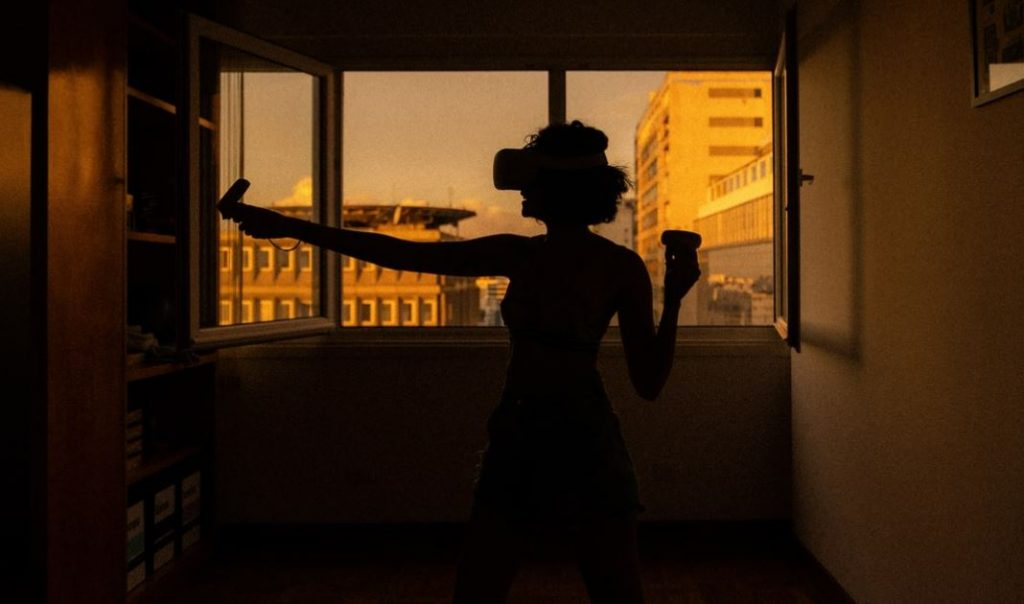
One of the biggest struggles when a patient enters physical or occupational therapy is making sure they’re following through with at-home exercises. Patients often forget the exercises they’re supposed to perform, forget how to do the exercises properly, or just get bored of doing them.
Even in these early days of virtual reality, companies like Neuro Rehab VR and XR Health are making strides towards reforming how we think about physical therapy. Neuro Rehab VR developed programs that help patients practice daily tasks—such as reaching to a high shelf when grocery shopping—and they claim that this immersive approach to physical therapy is already showing promising results. Some patients have been able to reach farther than they ever thought possible thanks to the sense of safety VR provides.
Aside from putting patients in real-life scenarios, there are also loads of games designed to make physical therapy more enjoyable. A New York Times article describes a patient who plays a VR balloon popping game to increase the range of motion in her injured shoulder. As she makes progress, her physical therapist can adjust the settings to slowly increase her range of motion. In addition to remotely adjusting settings, another benefit of using VR for at-home physical therapy is that the physician can monitor their patient’s dedication and progress.
And VR technology is being constantly improved. HP’s Reverb G2 Omnicept Edition can go so far as to track pupil dilation, muscle movement, and even one’s pulse, which could be huge for at-home physical therapy monitoring. And physical therapy is just the beginning, who knows what other potential medical uses a piece of technology like this could have in the future.
Mental Health Therapy
Virtual reality isn’t just good for physical health, it’s just as important for mental health therapy. Studies are finding that virtual reality can be used to help stroke recovery, Alzheimer’s disease, PTSD, anxiety disorders, and more.
One of the places where VR has had the most success is with exposure therapy. Exposure therapy is commonly used to treat PTSD, phobias, and social anxiety. The great part about exposure therapy in VR is that the patient can be exposed to traumatic scenarios while in a safe and controlled environment.
One New York Times article describes a scenario where a soldier who suffered from severe PTSD after his time in Afghanistan reduced his symptoms by reliving and confronting his worst memories in VR. In the article, Dr. Daniel Freeman, Oxford professor of clinical psychiatry, explains how this works by saying, “If you overcome something in VR, you overcome it in real life.”
A similar study done by the National Library of Medicine showed extremely positive results, reporting up to a “90% reduction in PTSD symptoms after completing VR exposure therapy.” And yet another article from Scientific American described scenarios where therapists asked patients who were afraid of heights to jump off a cliff, eventually reducing their fear of heights. These are scenarios that simply couldn’t be replicated in the real world, and so virtual reality is opening up doors for exposure therapy that weren’t possible before.
Exposure therapy is just one small example of what VR is being used for. The applications of VR for psychological disorders and neurological therapy seem endless.
Medical Training
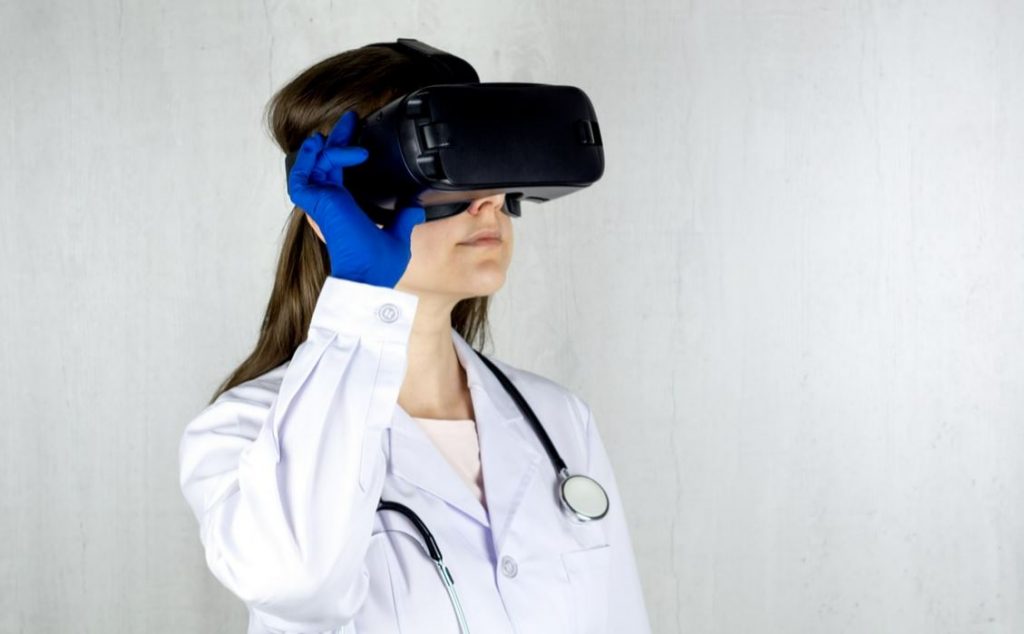
In addition to helping patients, virtual reality is also being used to aid in medical training. The technology allows medical professionals in training to experience different simulations without having to practice on real patients.
One use for VR medical training is to have paramedics experience what high-pressure, emergency situations feel like in a safe and controlled way. Another company that’s developing VR medical training is Oxford Medical Simulation. Their simulations include things like managing a medical team, administering medications, performing patient assessments, and more. They also have a feedback system that tells the user exactly what they did wrong and scores their performance.
Further, FundamentalVR—a program accredited by the Royal College of Surgeons of England—created Fundamental Surgery. This program is designed to put surgeons in realistic surgery scenarios using haptic feedback to increase immersion. Using this simulation, surgeons in training can practice surgery without endangering live patients.
Diagnosis
The final use of VR in healthcare is the use of VR in diagnostics. Virtual reality can be used as a diagnostic tool for psychiatric disorders such as schizophrenia, eating disorders, ADHD, etc. One study showed that VR was effective in both provoking and measuring psychiatric symptoms and posited that VR may be a reliable diagnostic tool for the future, pending more clinical studies.
In addition to diagnosing mental disorders, the use of VR for detecting eye conditions such as glaucoma is also being studied. However, the use of virtual reality as a diagnostic tool is still in its infancy and doesn’t seem to be regularly used yet.
VR in Education
In recent years, the use of VR in education is growing. Here’s how virtual reality can be used as a learning tool in schools and in the workplace.
VR in the Classroom
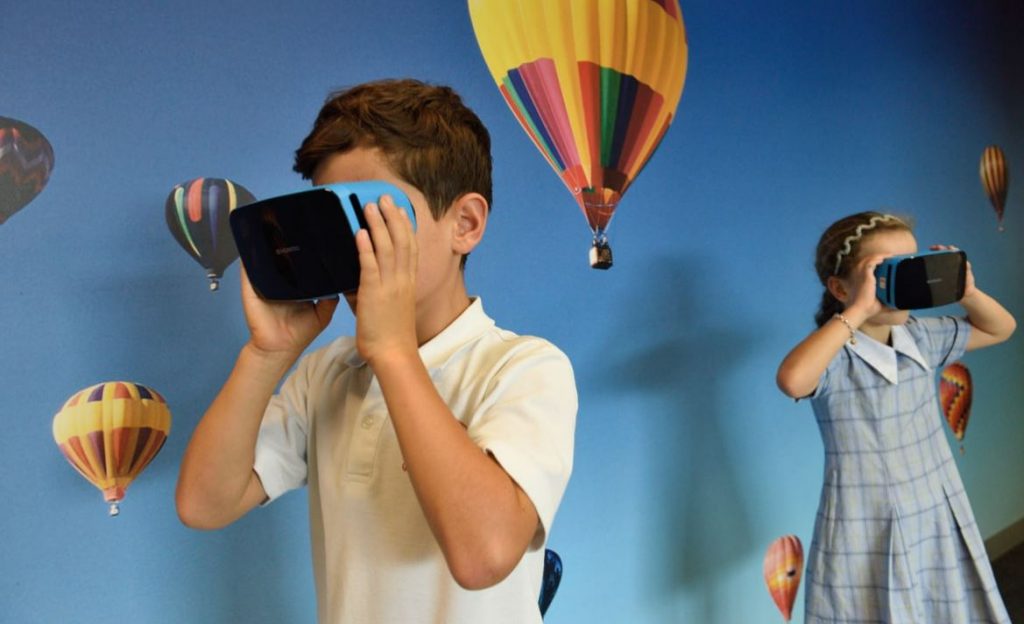
The uses of virtual reality in the classroom are versatile. Teachers can send students on virtual field trips, they can explore the world—Magic School Bus style, they can keep their children more engaged, and they can better help students with disabilities.
Virtual Field Trips
Imagine this: You’re in middle school and you’re learning about Ancient Rome in history class. Your textbook tells you what the Colosseum looked like, but you find it hard to pay attention so you zone out and start doodling. Then, your teacher brings out the VR headsets for a virtual trip to Ancient Rome!
You put the headset on and are instantly transported to the center of the Colosseum. You can hold Ancient Roman tools, view sculptures and artifacts, and appreciate the architecture. Doesn’t that sound like a much more engaging experience than reading a textbook?
Those are the exact experiences that companies such as Class VR, Nearpod, and countless other virtual reality companies have created and are trying to get into classrooms. And it’s not just history, these educational VR companies have put together lesson plans and experiences for any subject you can imagine.
The idea that children can fly to outer space to learn about the planets or dive into the ocean to learn about marine life is like riding The Magic School Bus in real life.
This concept is still in its early days. Many classrooms are hesitant to adopt virtual reality because they’re worried the technology won’t be reliable, that students will lack social connections, and that VR requires ample space, among other concerns. But as the technology keeps improving, more research is done, and a generation of younger teachers steps in, it looks like virtual reality may be a common classroom installment in the years to come.
VR for Students With Disabilities
VR can also be used to support students with special needs. One study showed that students with Autism Spectrum Disorder (ASD) responded positively to VR social environments. VR has even been shown to improve their social interaction skills. Additionally, the same study showed that VR can assist students with hearing impairments. It can help them improve their orientation and balance, which can help reduce depression rates. Further, a study from the National Library of Medicine reported that learning in VR can even improve communication and language skills.
And this is just the tip of the iceberg. Perkins School for the Blind suggests using relaxing VR experiences to help students with sensory overload, signing avatars can be used to support deaf children, students in wheelchairs can experience what it feels like to surf standing up, and so much more.
VR at Work
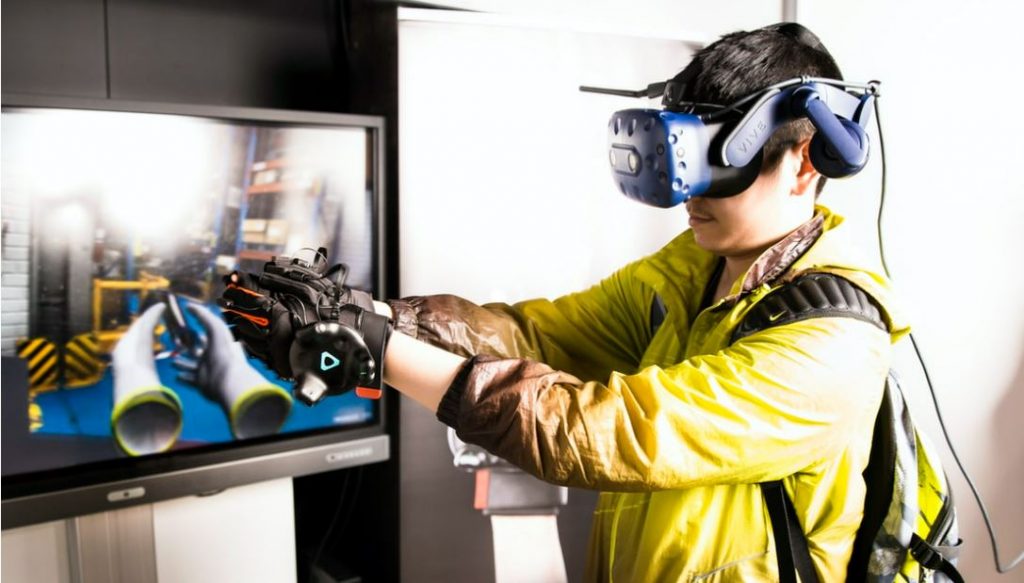
The use of VR for educational purposes extends far beyond the classroom. According to Forbes, there are many benefits of using virtual reality to train employees. VR provides a more interactive training experience than computer training programs, it’s a good tool to safely practice for emergency situations—such as robberies—and it can provide global training for remote employees.
Companies such as Walmart, ExxonMobil, H&R Block, and UPS have already implemented VR training at many of their locations. So far, VR is reported to reduce training time by 40%, it’s a cost-effective approach for larger companies, and it proved to be a very convenient tool for training during the pandemic, when in-person groups were limited.
It’s likely that more companies will adopt VR training in the near future. Especially since the ones that already have are getting such positive results from virtual reality applications.
VR for Communication
One place where virtual reality has the potential to thrive is with communication. The use of VR for communication is still in its early stages, but it has the potential to do so much good in the future. In the age of mobile phone and social media addiction, VR might just be what society needs to interact with one another again.
Communicating With Family and Friends
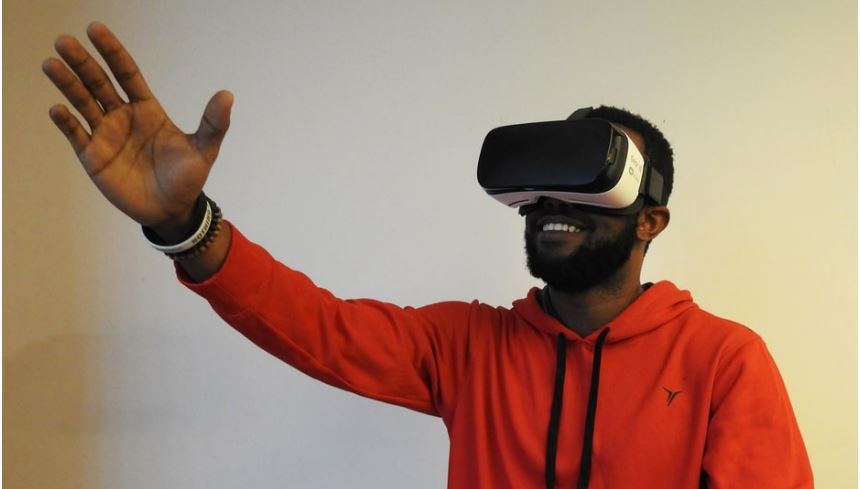
Have you been on a Zoom call with a family member or friend and still felt disconnected? You’re not alone, Zoom calls can be exhausting. Echos, delays, and freezing screens are just some of the issues that are present with video calls. Additionally, holding a phone up to your face or sitting in front of a computer screen feels impersonal. This is where VR comes in.
Virtual reality has shared spaces in which multiple people can hang out, almost as if they were in person. In these spaces, you can go to a movie theater, play board games, visit and create art exhibits, attend concerts, go to a bar, or just hang out. These VR experiences make those obligatory calls with your family members or catching up with friends much more entertaining.
In addition to providing entertainment, a study published in Science Direct showed that hanging out with friends in VR may actually benefit your mental health. The study explains that you can get experiential benefits in VR that you can’t get from a video call. VR also fulfills the human need to feel physically co-present with others, and it satisfies the need for relatedness, all of which improve mental health. These benefits are even more important in context of the pandemic and having to limit in-person social interactions.
Communicating With Coworkers
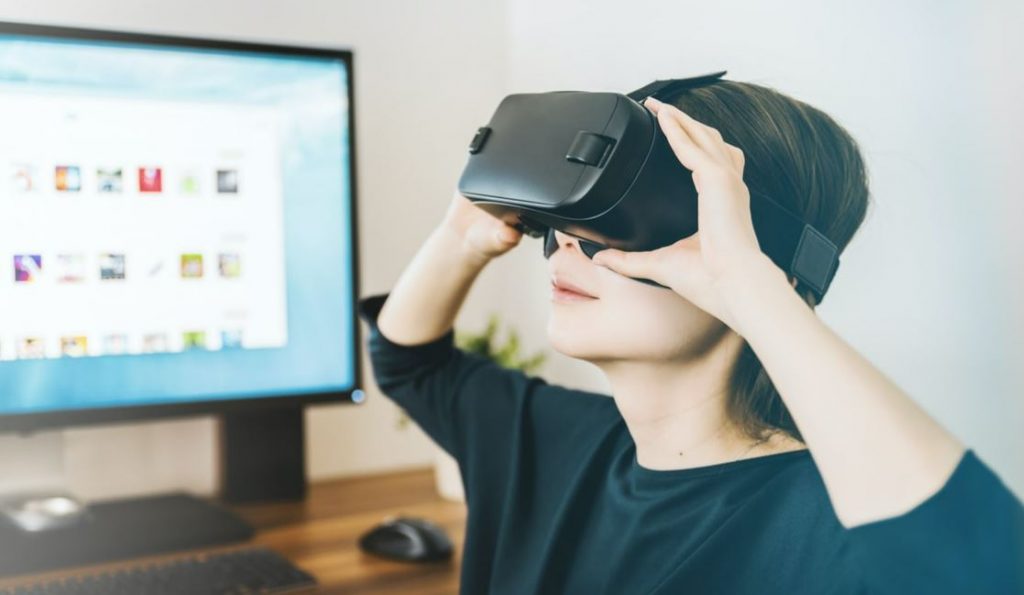
Virtual work meetings suffer from the same technical problems stated above, except the stakes are higher. If you get distracted or zone out, you could end up missing some vital info.
Although it’s very early and not many companies have adopted it yet, VR may end up being the biggest innovation for remote meetings—and in some ways, they may actually be better than in-person meetings.
VR technology allows workers to present like never before. Instead of relying on PowerPoints (although you can still use them in VR if you want to), you can present with 3D models, draw diagrams and write notes in mid-air, and even have access to your computer screen. The virtual spaces even enable you to shake hands and make eye contact like you would if you were in the same physical space.
Outside of the conference room, VR also has virtual workspaces that allow employees to feel like they’re part of a company, even if they’re stuck at their kitchen table. This can help employees ignore environmental distractions, feel like part of a team, and speak to coworkers without having to schedule video calls. This experience gives you the best of both worlds: you can work from the comfort of your home, but still get the experience of working in an office setting if that’s where you thrive the most.
Is VR Addictive?
The question most skeptics are asking is: won’t people become addicted to virtual reality and choose it over real life? As of right now, it doesn’t look like that will be a problem any time soon. It’s difficult to spend an extended amount of time in VR because of a few reasons: using VR for too long causes head pain, the headsets have limited battery life, and using the controllers for too long can cause Gorilla Arm Syndrome. So, let’s just say that VR has a long way to go before people get sucked in like the Matrix.
So, Is VR the Future?
Not only is virtual reality the future, it’s gaining popularity in the present day as well. As more and more companies invest in VR software and headsets, the industry will continue to grow. As stated earlier, the Quest 2 alone shipped over 10 million units as of late 2021. And that number will only rise as the Metaverse grows.
At the moment, there are many schools, medical practices, and employers who are hesitant to adopt the up-and-coming technology. But as VR becomes more accessible and more studies are done to prove its usefulness, there’s no doubt that virtual reality is the future for many industries.

Want to fast-track your learning? With Shortform, you’ll gain insights you won't find anywhere else .
Here's what you’ll get when you sign up for Shortform :
- Complicated ideas explained in simple and concise ways
- Smart analysis that connects what you’re reading to other key concepts
- Writing with zero fluff because we know how important your time is



